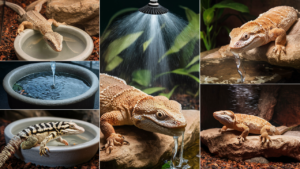Grooming is an essential aspect of pet care, ensuring the wellbeing and happiness of our furry friends. From dog grooming techniques to cat nail trimming and the use of hypoallergenic shampoos, this comprehensive guide delves into the essential tips for maintaining a clean, healthy, and well-groomed pet.
Paws and Furs: The Essentials of Dog Grooming Services
Moving seamlessly from the intricacies of dog grooming, it’s important to delve into the art of cat nail trimming, a crucial aspect of feline care that significantly differs from the services provided to dogs. Unlike dogs, cats have retractable claws that play a vital role in their mobility, defense mechanisms, and natural behavior. Proper nail care is essential not only to keep your cat comfortable but also to prevent the risks associated with overly long nails, such as getting caught in fabric or causing injury to the cat or its owner.
Trimming a cat’s nails requires specific tools, such as a quality pair of feline nail clippers or a human nail clipper in a pinch, and a cautious approach to avoid cutting the quick, which can lead to bleeding and discomfort. The process should incorporate gentle handling and positive reinforcement to make the experience as stress-free as possible for the cat. Start by gently pressing the paw pad to extend the claw and carefully clip the tip of the nail, avoiding the pink part (the quick) where blood vessels and nerves are present.
The critical distinction between dog and cat grooming becomes evident in the approach and purpose of nail care. While dogs may require nail trimming to avoid overgrowth and pavement wear, cats need trimming to prevent the claws from becoming too sharp or growing into the pads. This regular maintenance helps in reducing unwanted scratching of furniture or injury to people, preserving the household harmony.
Unlike dog grooming, which may involve a variety of services to maintain the dog’s hygiene and appearance, cat grooming, particularly nail care, also encompasses a crucial aspect of their health and well-being. It’s an opportunity to inspect the paws for any signs of injury or infection and ensure the cat’s overall health is monitored closely.
Advocating for routine nail trimming rather than opting for declawing, or onychectomy, is vital. Declawing is an irreversible procedure that involves the removal of the last bone of each toe. The physical and psychological effects of declawing can adversely affect a cat, leading to pain, mobility issues, and behavioral changes. Safe and effective nail trimming stands out as a compassionate alternative that protects the cat’s well-being while maintaining a safe environment for both the pet and the pet owner.
The Art of Cat Nail Trimming
Following the exploration of dog grooming services, it’s essential to address a crucial aspect of feline care: The Art of Cat Nail Trimming. Nail trimming is vital for cats not only to prevent the risk of overgrowth leading to painful conditions but also to mitigate unwanted scratching of furniture or even owners. Unlike dogs, whose grooming might emphasize coat care and styling, cat grooming has a strong focus on nail health, stressing the significance of careful trimming as a fundamental part of their routine care.
Why Trim? Regular nail care is indispensable for maintaining your cat’s paws healthy. Long, untrimmed nails can curl back and grow into the paw pads, causing pain and infection. Furthermore, sharp nails can easily snag on carpets or furniture, leading to potential injury or unwanted damage to household items. It’s a preventative measure that safeguards both the pet and the living environment.
Tools for the Task Begin with the right tools: a quality pair of cat nail clippers. These are specially designed to cut the nail cleanly without splintering. A nail file can be helpful for smoothing any rough edges. Investing in a comfortable, non-slip mat and having treats on hand can also make the process easier for both pet and owner.
Technique Matters Proper technique is key. Gently press the pad to extend the nail and trim only the tip, avoiding the pink part known as the “quick,” where blood vessels and nerves reside. Making the experience calm and positive is crucial; start slowly, perhaps with just one nail at a time, and reward your cat to associate nail trimming with a positive outcome.
Alternatives to Declawing Emphasizing alternatives to onychectomy (declawing) is essential. The procedure involves amputating the last bone of each toe, which can lead to lasting physical and behavioral issues. Instead, regular nail trimming, providing scratching posts, and the use of nail caps are humane solutions that maintain both the physical and psychological well-being of cats.
Maintaining a Routine Establishing a regular trimming schedule prevents overgrowth and reduces the likelihood of scratching behavior. It’s an essential component of feline care that complements the efforts made in dog grooming, focusing on tailored, species-specific needs.
As we transition into the realm of Splash and Shine: Pet Bathing Tips, it’s important to remember that whether bathing dogs or trimming cat nails, the overarching goal remains the same: ensuring the well-being of our pets through proper grooming practices. Maintaining a consistent grooming routine, equipped with the right tools and knowledge, is key to a healthy and happy companion.
Splash and Shine: Pet Bathing Tips
Moving from the delicate precision required in cat nail trimming, we now delve into the essentials of an effective bathing routine for your pets, which is equally paramount in maintaining their overall health and happiness. Bathing your pet can be a bonding experience, but it’s crucial to approach this with the right knowledge to ensure it’s enjoyable for both you and your furry friend.
Firstly, **water temperature** plays a critical role in making the bath comfortable for your pet. It should be lukewarm, mimicking the natural body temperature of most pets, to prevent any shock or discomfort that could be caused by water that’s too hot or too cold.
When considering the **frequency of baths**, it largely depends on the breed, lifestyle, and coat type of your pet. Dogs with oily coats may require weekly baths, while those with water-repellent coats should have less frequent baths to preserve their skin’s natural oils. Cats, on the other hand, are naturally meticulous groomers, but occasional baths may still be necessary, especially for those who venture outdoors or are particularly adventurous.
To address pets with varying **coat types and temperaments**, employing gentle brushing before the bath can help in detangling knots for pets with longer coats, making the bathing process smoother. For anxious pets, initiating the process with calm, reassuring tones and positive reinforcement can ease their nerves. Encapsulating the bath as a playtime, using toys and treats, can also aid in creating a positive association with bath time.
A vital aspect of the bathing process is **proper drying**. Towel drying alongside gentle patting is essential for most pets, followed by a hairdryer on a low, cool setting for those with dense fur. However, it’s important to introduce the sound of the hairdryer gradually to avoid startling your pet.
In transitioning to the next chapter, we understand the necessity of selecting the right **hypoallergenic pet shampoos**, particularly after a thorough bath. The right shampoo not only ensures that your pet’s coat is clean but also takes care of sensitive skin, preventing any adverse reactions. This aspect is crucial in maintaining the joy and health in your pet’s grooming routine, creating a seamless bridge to understanding the deeper importance of hypoallergenic products in your pet’s care regimen.
Choosing Hypoallergenic Pet Shampoos
Choosing the right shampoo for your pet, particularly if they have sensitive skin, is a crucial step that follows the bathing tips previously discussed. Hypoallergenic pet shampoos are specially formulated to minimize the risk of skin irritation, making them an ideal choice for pets with allergies or sensitivities. When selecting a hypoallergenic shampoo, it’s essential to look for products that are free from harsh chemicals like parabens, sulfates, and artificial fragrances, all of which can cause or exacerbate skin problems.
Ingredients to Look For:
- Aloe Vera: Known for its soothing and moisturizing properties, Aloe Vera helps to calm irritated skin.
- Oatmeal: Provides natural relief for itchy skin and helps maintain the skin’s moisture barrier.
- Chamomile: Offers anti-inflammatory benefits, reducing skin irritation and calming sensitive skin.
Ingredients to Avoid:
- Artificial Fragrances: Can cause allergic reactions and irritate sensitive skin.
- Parabens and Sulfates: Often used as preservatives and cleaning agents, these can strip the skin of natural oils, leading to dryness and irritation.
Identifying a genuine hypoallergenic shampoo involves checking the label for certifications or claims of being dermatologist-tested on animals. It’s also crucial to select products that specifically state they are hypoallergenic. Opting for shampoos with natural ingredients can further reduce the likelihood of skin irritations, promoting a healthy coat and skin.
Remember, the transition from washing to grooming should be seamless, requiring the appropriate tools discussed in the upcoming chapter. These tools complement the use of hypoallergenic shampoos by ensuring that grooming efforts are not only effective but also gentle on your pet’s skin and coat. Whether it is through the choice of a gentle shampoo or the selection of the right grooming tool, the ultimate goal remains the health and happiness of your companion.
Essential Pet Grooming Tools and Their Uses
After selecting the right hypoallergenic shampoo for your pet’s sensitive skin, it’s crucial to equip yourself with the proper grooming tools to ensure a thorough and comfortable grooming experience. Various tools are designed to cater to the diverse coat types of pets, each serving a unique purpose in maintaining your pet’s coat health and appearance.
Brushes come in several forms, including slicker brushes, bristle brushes, and pin brushes. Slicker brushes, with their fine, short wires close together on a flat surface, are excellent for removing mats and tangles, especially in medium to long-coated breeds. Bristle brushes, suited for short-haired pets, help remove loose fur and stimulate the skin. Pin brushes, featuring wide-set teeth, are gentle options for pets with longer hair, effectively detangling without pulling painfully on the skin.
Combs are indispensable for fine grooming work, such as removing tiny knots and getting rid of debris or fleas. A flea comb, with its closely spaced teeth, is an effective tool for detecting and removing fleas. Meanwhile, wider-toothed combs are excellent for fluffing the coat and ensuring an even hair length.
Rakes are designed to penetrate thick coats and remove undercoats without harming the topcoat. They’re essential for breeds that shed heavily, allowing for the removal of dead undercoat fur that can cause matting and skin irritation.
Nail clippers are a must-have in your grooming toolkit. Regular nail trimming is crucial for your pet’s mobility and comfort. There are several types, including scissor-style and guillotine-style clippers. Selecting the right one depends on your pet’s nail thickness and your comfort level with the tool.
Understanding the correct use of these tools is pivotal. Always brush or comb with the coat’s grain to prevent discomfort, and start at the head, working your way to the tail. Be gentle around sensitive areas like the face and genitals. Nail trimming should be done carefully to avoid cutting the quick, which can cause pain and bleeding.
Keeping your grooming tools clean and well-maintained is essential to prevent the spread of skin conditions and ensure their longevity. Clean them after each use and check regularly for signs of wear and tear, replacing them as necessary.
By integrating these tools into your grooming routine, you can enhance your pet’s coat health, appearance, and overall wellbeing. This sets a solid foundation for the next step in home pet grooming, where you will learn to combine these tools and your hypoallergenic shampoo choice into a safe, effective grooming session, even addressing the challenges of grooming anxious or uncooperative pets.
Pet Grooming at Home: A Step-by-Step Guide
Building on the foundation of selecting and maintaining the right grooming tools, it’s essential to embark on the actual grooming process at home—a transformative journey for both pet and owner. Begin with a gentle brushing session, using the tools discussed in the previous chapter tailored to your pet’s coat type. This initial step not only removes loose fur and dirt but also helps to distribute natural oils throughout the coat, fostering a healthy shine.
Next, transition to nail trimming, a crucial yet often daunting task. For dogs, ensure you’re equipped with a specially designed clipper, keeping treats at hand to soothe and reward them throughout. Cats, on the other hand, may require a quiet, calm approach, preferably with a person they trust to gently hold them as you trim. Always avoid cutting into the quick by trimming just the tips and providing plenty of praise and rewards afterward.
Bathing your pet comes next. Prepare a comfortable, slip-proof space and use lukewarm water alongside a hypoallergenic pet shampoo to avoid skin irritation. Work in the shampoo gently, avoiding sensitive areas like the eyes and ears. Rinse thoroughly, as residue can lead to skin issues.
For pets prone to anxiety, keep grooming sessions short and positive, gradually increasing duration as they become more accustomed. Always prioritize safety, using slow, reassuring movements.
Regular grooming not only strengthens your bond with your pet but also allows for regular health checks to catch any abnormalities early. However, if your pet displays extreme discomfort or fear, or if you encounter matting and knots that don’t resolve with gentle brushing, seeking professional grooming services is advisable. They possess the expertise to handle challenging grooming situations while ensuring your pet’s safety and comfort.
Conclusions
Regular grooming is fundamental for the health and comfort of your pet. From proper nail care to choosing the right hypoallergenic shampoo, each aspect of grooming plays a crucial role in your pet’s wellbeing. Implementing these expert tips will ensure that your pet not only looks their best but also enjoys a happier, healthier life with you.



